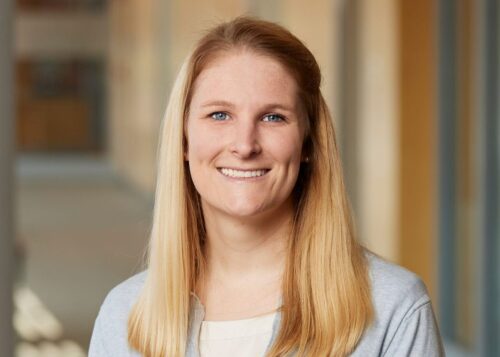
Boston Medical Center
At the 2023 annual symposium on quality improvement and patient safety, themes centered on creating efficient processes for psychological safety on medical teams.
Last week, Boston Medical Center (BMC) hosted the 18th annual Raphael Mira Patient Safety Symposium and the 8th annual Quality Improvement and Patient Safety Poster Presentation and Award Ceremony. The symposium — named in honor of a pediatric patient who lost his life due to a medical error nearly 20 years ago — is a way to honor Raphael’s legacy and ensure that BMC continues to learn every day to ensure patient safety. These yearly events serve as reminders that every person at BMC is critical to that mission.
At the symposium, Amy Edmondson, PhD, a professor at Harvard Business School was invited to speak about her research on the importance of psychological safety in the workplace. Psychological safety, she says, is imperative in any workplace. It is critical to empower all members of a team to speak up without fear of repercussions and, by doing so, can help prevent errors before they happen. This is important in any workplace, but it is of particular importance in a high-stakes hospital setting where a multidisciplinary medical team is making critical decisions specific to a patient’s medical care.
Posters at this year’s symposium included work across all of BMC — from an anesthesiologist looking to break down barriers in communication across disciplines, to a chaplain who studied the efficacy of the chaplain program in patient outcomes, to a multi-disciplinary team looking to streamline and tighten the process between breast tissue removal during a lumpectomy and processing the tissue sample at the lab. All of these innovations are examples of BMC’s commitment to quality improvement and patient safety.
To learn more about why quality improvement and psychological safety are cornerstone of BMC’s care delivery model, HealthCity spoke with BMC’s Chief Quality Officer and Vice President of Quality and Patient Safety, Jodi Larson, MD; and Director of Quality and Patient Safety Carrie Googins, MSN, RN.
HealthCity: Why do you think it’s so important for health systems to be focused on quality improvement?
Jodi Larson, MD: There are so many processes that impact patient care. This unfortunately may include gaps in workflows and communication that allow our employees to ineffectively communicate with one another. The Quality and Patient Safety department is focused on learning from each case and each reported safety event so that we can improve the quality and processes to prevent any negative outcome from impacting the next patient we see.
Carrie Googins, MSN, RN: We continue to focus on building robust and resilient systems and processes to protect our patients. We need to make it easy for our staff to provide high quality care. An everyday example of what we are trying to do for our patients includes a stop sign. The choice to stop at a stop sign is one each driver makes because they know the risk of not stopping might include running into another car or a pedestrian. If road safety was designed to “force” drivers to stop at stop signs, it would include a concrete bollard that would come up between cars at stop signs to prevent them from moving forward until it was safe to do so. Here at BMC, we are trying to create resilient processes and workflows — our version of those imaginary concrete bollards — for patient care instead of relying on staff to follow policies or stop at a metaphorical stop sign.
HC: What is the importance of psychological safety in care teams?
CG: It’s really about having each other’s backs, truly working as a team with patients as our central focus. We all need to help our colleagues succeed and gently let them know if we observe something that compromises patient care. We should all expect this from one another, learn from the experience, and be able to respond with gratitude. That’s a really hard thing, but we need to have a level playing field so people at all places on the care team — from doctors to nurses to environmental services (EVS) — feel comfortable to speak out, and have other people on the care team receive that kindly and respond productively.
HC: Eighteen years is a long time to be having these symposiums and come together around this idea of patient safety. What are some of the biggest learnings that you’ve uncovered in the last 18 years?
CG: Patient safety is a journey that never ends. Communication continues to be the root cause of a lot of patient harm. And that’s communication at every juncture. Most of it is either miscommunication, such as nurses and doctors assuming what the other is thinking so they don’t ask questions or recognize that a conversation is needed. One of the basics in patient experience is narrating the care from a physician to a patient. Saying “I’m listening to your heart and this is what it’s going to tell me,” “I’m listening to your lungs for this reason,” and connecting the dots for the patient. This needs to be true from a nurse to a patient, from a nurse to a doctor, or from doctors to doctors across disciplines.
JL: There’s an old parable about President John F. Kennedy Jr. walking around NASA before the moon launch where he asked the custodian, “What do you do here at NASA?” The man responded, “I’m here helping to put a man in the moon.” That’s that kind of mentality I want us all to adopt at BMC: We’re all here for patient safety. No concern, no issue is too big or small for people to bring up. Everyone should feel that we are all aligned on our BMC mission.
This interview has been edited and condensed for length and clarity.


